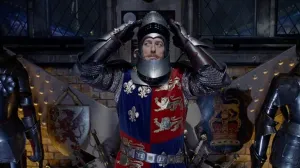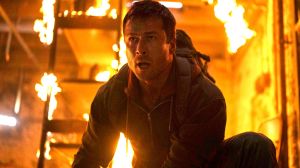Even in the futuristic reaches of science fiction, death can be final and brutal. While not every death in sci-fi TV means the character is gone forever, most of the most brutal ones in our cultural memory are. Sci-fi also allows us to ask questions about the nature of death, as well as making us wonder how horrific we can get as a species. Even though sci-fi is often idealistic and optimistic at its core, that doesn’t mean some truly haunting deaths can’t come up on the small screen.
Videos by ComicBook.com
Some sci-fi shows, of course, rely on brutal and horrific deaths and injuries: The X-Files was one of the first, while The Walking Dead appropriately continued that trend, adding a certain horror flair. On the other hand, brutal deaths pop up in sci-fi shows you might not expect: Star Trek is often a hopeful franchise, but characters can and do go out in unexpected and often frightening ways. These are the top 10 most brutal deaths in sci-fi TV history. As this list deals with character death, spoilers for multiple sci-fi TV shows will be included. Tread carefully!
10) The “Death of Personality,” Babylon 5
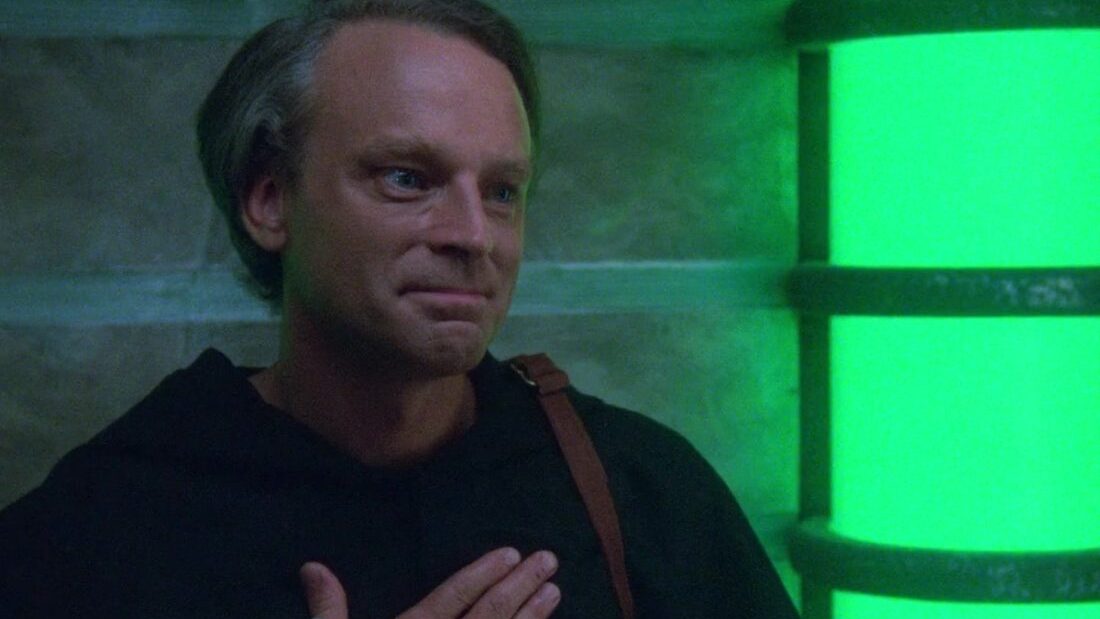
Babylon 5 actually stayed away from gore; character deaths weren’t always final, and most of the leads of the show survived to the final season finale (and even to the actual series finale, “Sleeping in Light.”) However, one of the more futuristic concepts that came up was the corporal punishment “Death of Personality” — essentially, a mindwipe. The “Death of Personality” hard reset a human being who had committed a crime that would normally mean the death penalty or a life sentence in our time.
“Passing Through Gethsemane” was an early Season 3 episode which featured a murderer who had gone through the “Death of Personality” and been turned into kindly space monk, played by Brad Dourif. While his life seems more peaceful at the start of the episode than it ever was before the mindwipe, that is, of course, a fallacy. He still has the face of a killer, and even a mindwipe isn’t perfect: Brother Edward (Dourif) begins to remember his terrible past throughout the episode, and he ends it as dead as his victims, thanks to their family members’ revenge. The “Death of Personality” was clearly created as a merciful alternative to the death penalty, in the B5 timeline, but in reality, it was just a brutal continuance of pain and suffering.
9) “F. Emasculata,” The X-Files
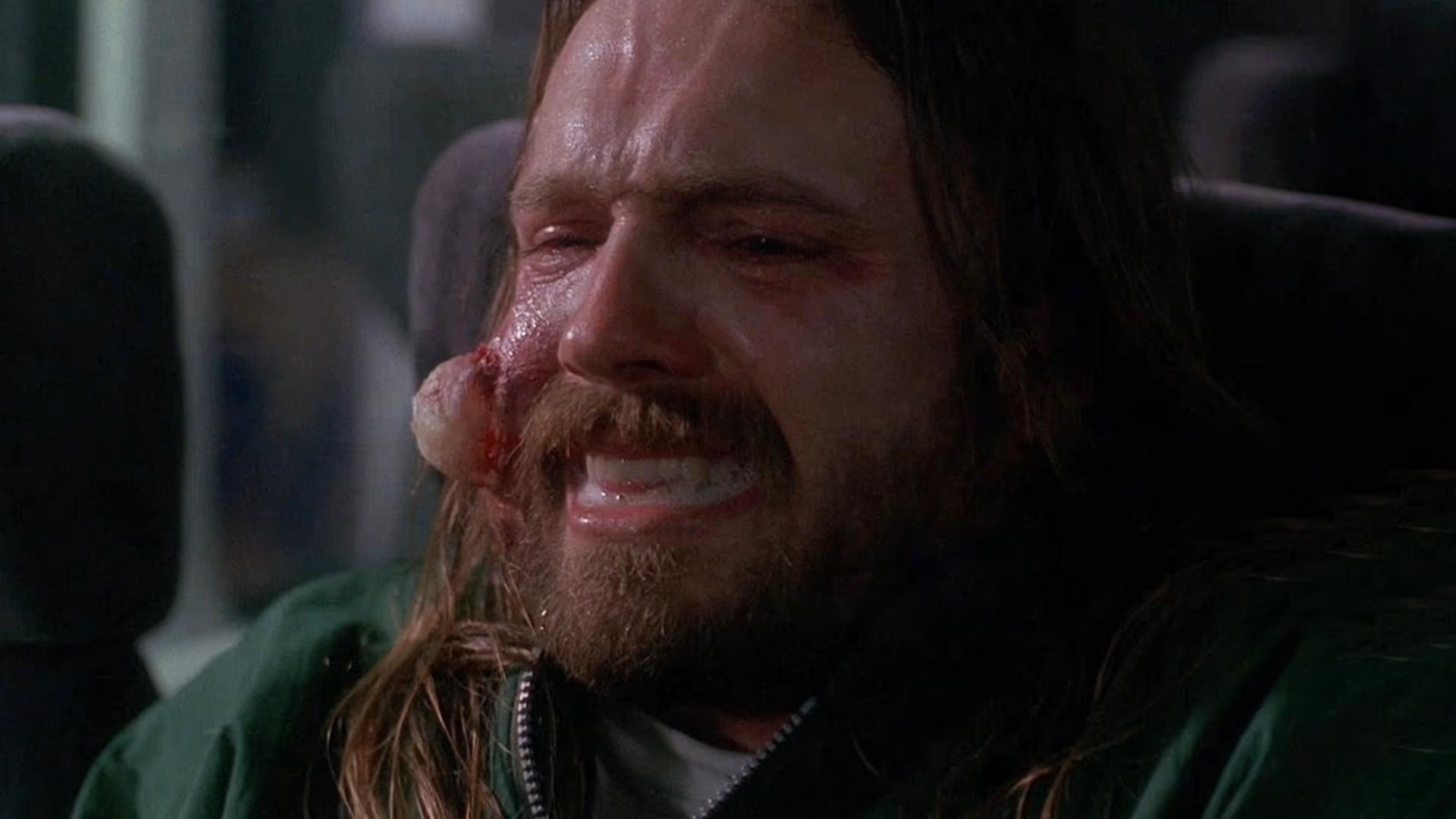
The X-Files didn’t shy away from brutal deaths throughout its long run, but a Season 2 episode, “F. Emasculata,” is their entry on this list because how eerily real it was. It centers a mysterious disease brought back to the States by a pharmaceutical researcher, carried by a parasite. It’s definitely more a ‘monster-of-the-week’ episode than anything else, but the special effects are over the top and gruesome, as pustules erupt out of people’s faces and eventually burst. It also, of course, feels maybe too real, as the disease spreads mainly because of people’s carelessness: that’s a common trope in contagion-related media, but that’s because it’s an effective trope, and one that our own experiences with disease often echo.
8) Juliet Burke, Lost

There were a lot of deaths on Lost; at some point, it became the driving engine of the show. Juliet’s death, though, is probably the most brutal, because it comes near the end, and it’s also somewhat confusing. In the Season 5 finale, she’s left to detonate a fission bomb all by herself, already grievously injured, in the hopes of ‘resetting’ the timeline and avoiding the plane crashing at all on the island. She manages to detonate it, at the cost of her own life, but all she really succeeds in doing is getting herself and the group she’s with sent from 1977 to 2007. The plane still crashes, and she dies, in Sawyer’s arms, so there’s that at least. While she gets her happy ending in the flash sideways, her death still seems brutal given how futile it initially seemed.
7) Jadzia Dax, Star Trek: Deep Space Nine

Jadzia Dax’s death on Star Trek: Deep Space Nine was ultimately more emotionally brutal than anything else. She was the only lead to die permanently on the show, and it was only because contract negotiations between Terry Farrell and the producers broke down. While her death led to Ezri Dax’s appearances in the final season, the idea that Jadzia got so close to the end of the Dominion War, and a happy life with her new husband, Worf, has never sat right with fans. That she’s in the Bajoran temple when Gul Dukat targets her, giving thanks to them for potentially helping Dr. Bashir help her conceive a child with Worf, makes it even worse. Worf gets to say goodbye, and the symbiont Dax is saved to be transferred to another host, but Jadzia’s sudden death so close to the end of what had been a terrible fight for the whole DS9 crew is still difficult to watch.
6) Tasha Yar, Star Trek: The Next Generation
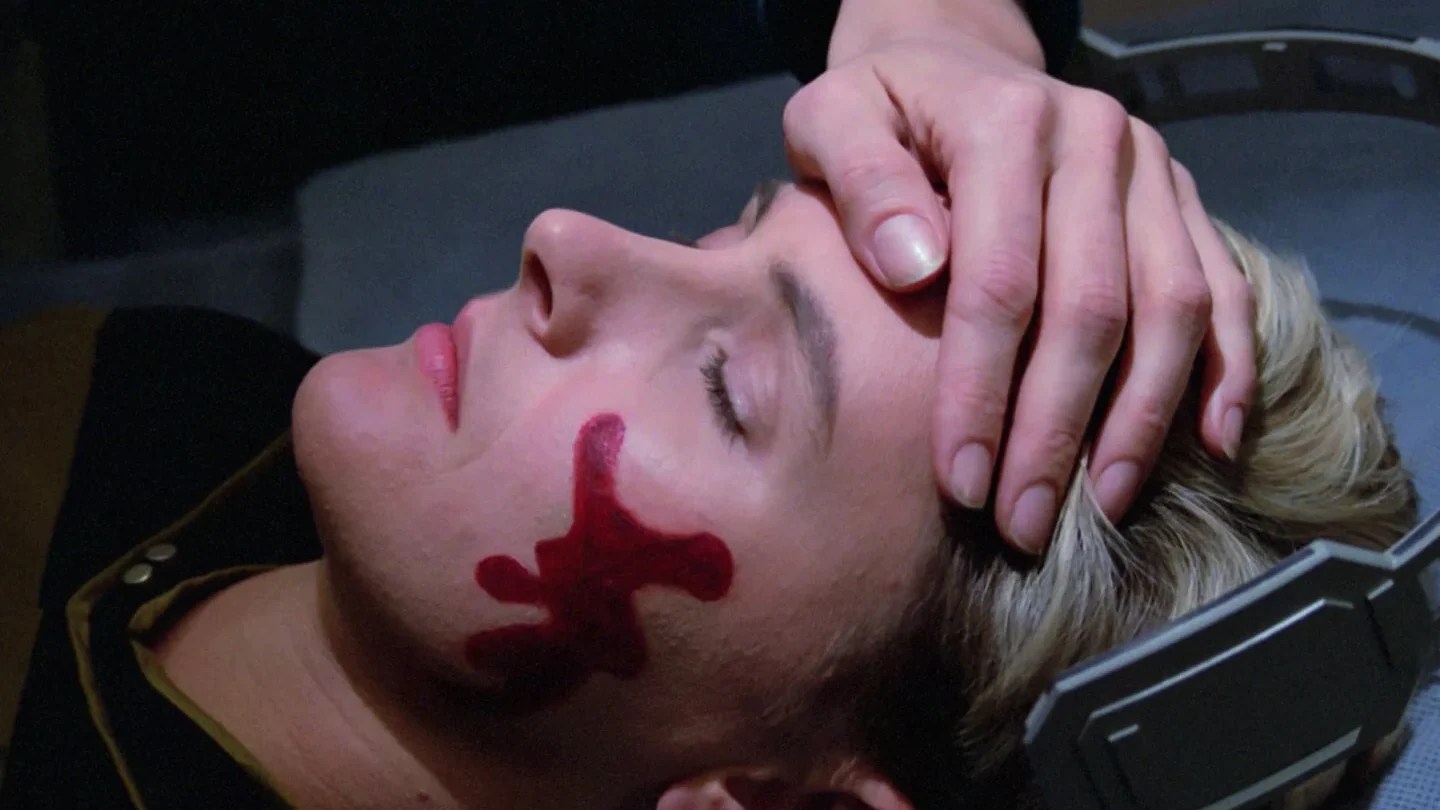
Tasha Yar, above Jadzia Dax on the ‘brutal’ ranking? Well, yes; at least Jadzia got six seasons of airtime. Tasha couldn’t even make it through Season 1 of The Next Generation; this was, admittedly, because Denise Crosby was disappointed by how little development her character was getting. That is, ultimately, a true and decent complaint, and she left on good terms, which did mean an alternate timeline Tasha would appear later on, and that alternate Tasha would have a half-Romulan daughter named Sela, who has continued to pop up in the franchise, even playing a major role in Star Trek Online.
At the time, though, Tasha’s death struck fans as a lost opportunity; it left just two remaining women crew members on the Enterprise-D, Beverly Crusher and Deanna Troi. Tasha was also notable because she was the Chief Security Officer, which felt like an improvement for representation of women crew members in Trek. Her backstory, too, was more interesting and complex than say, Troi’s was. Tasha, though, gets killed by an angry tar pit, in the end, one of the many casualties of TNG‘s rocky first two seasons.
5) Joel Miller, The Last of Us
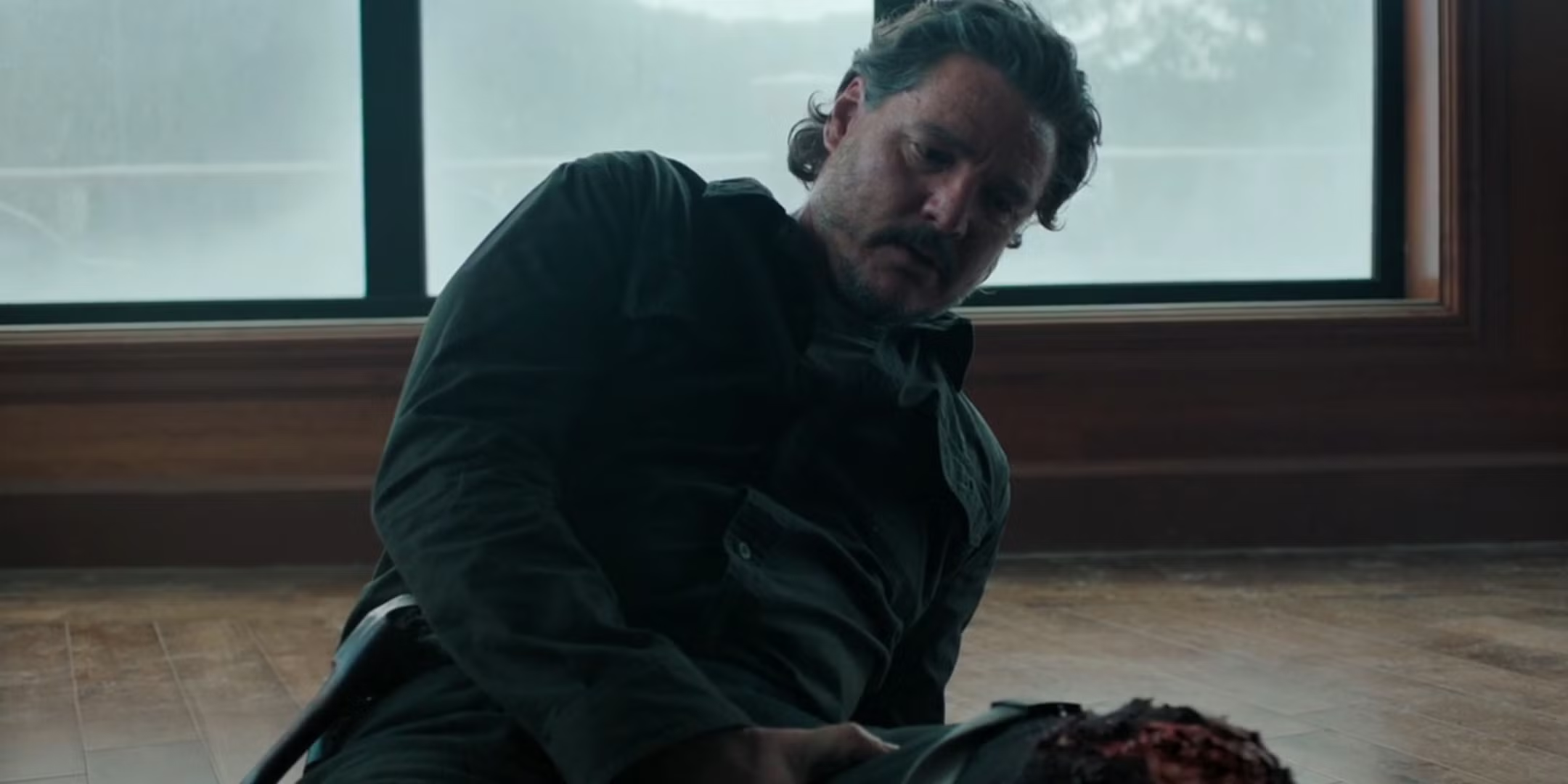
Joel Miller’s death was pre-destined from the moment The Last of Us tv show was greenlit. Although fans wondered if the show would divert from the story as established in both Last of Us games, it quickly became apparent in Season 2 that that wouldn’t be the case. Joel gets captured by Abby, and he dies in the show even more graphically than how he died in the game: brutally beaten to death by a golf club and, ultimately, stabbed through the neck. Joel’s death is both physically brutal and emotionally brutal; even though fans of the game knew it was coming, no one likes to see Pedro Pascal leave a series that violently (…and, of course, that had happened before, in Game of Thrones).
4) Glenn Rhee and Abraham Ford, The Walking Dead
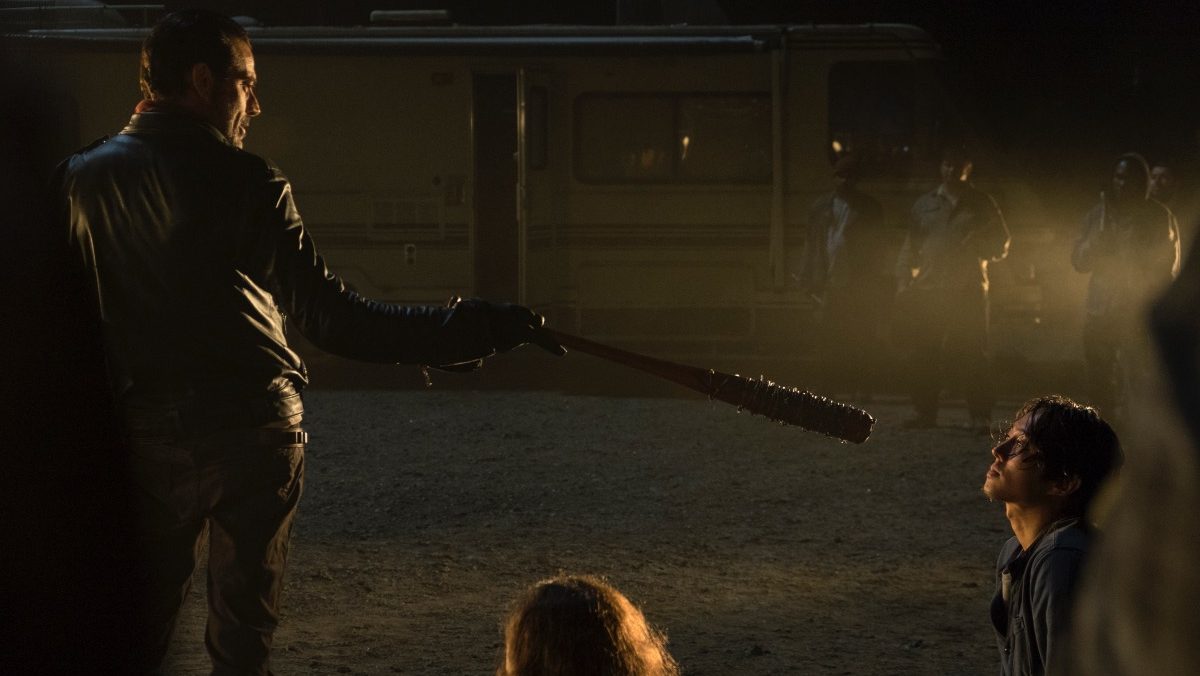
There’s a lot of bludgeoning deaths in these two entries: The Walking Dead, while primarily a horror show, does have sci-fi elements, so it earns its place on this list with the deaths of Glenn Rhee and Abraham Ford in the Season 7 premiere. Negan, of course, delivers the killing blows with his famous bat. Glenn dies as he does in the comics, while Abraham becomes collateral damage in the episode. Abraham’s actor, Michael Cudlitz, even said on the Talk Dead to Me podcast that he thought the show went too far in how brutal the deaths ultimately were. Both characters were fan favorites; Glenn, especially, was mourned. Critics, too, were disappointed, generally agreeing that Negan’s killings in the episode were a bridge too far in a show that often strained believability.
3) Ianto Jones, Torchwood: Children of Eden

Most TV deaths, even sci-fi TV deaths, don’t end with the character getting a real-life shrine. Ianto Jones is the exception; he really does have a ‘shrine’ in Cardiff, Wales, at the Mermaid Quay. Fans have posted notes, left tributes, and even made pilgrimages to mourn the beloved dead boyfriend of the immortal Jack Harkness, who was a shock death towards the end of the already brutal miniseries Torchwood: Children of Earth. Despite the Who franchise’s love of timey-wimey changes, Ianto never has returned to the show: a very final death for a franchise that tends to eschew that sort of thing.
2) Tracy and Gordo Stevens, For All Mankind
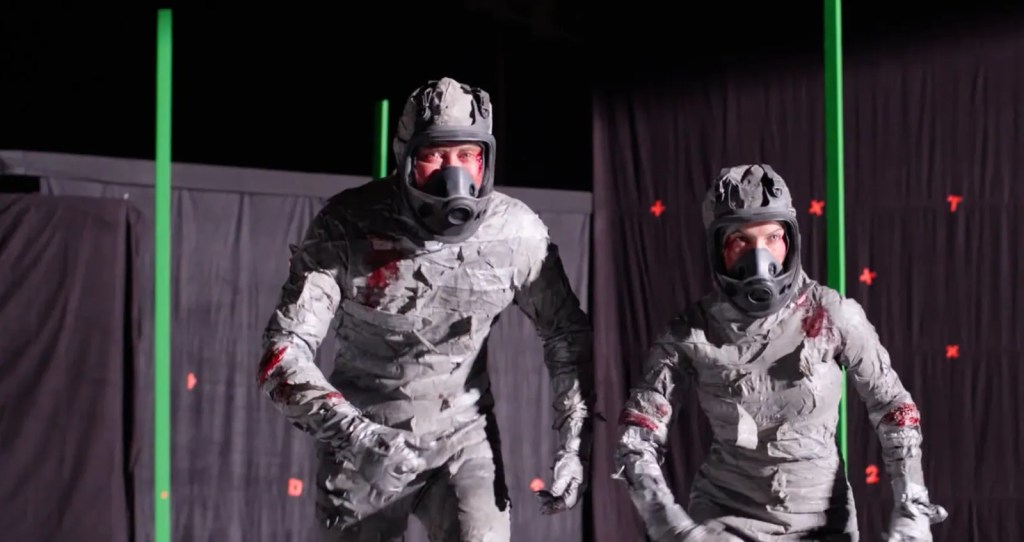
When you’re retelling the history of the Space Race, and changing a lot of that history, people are going to die, just like they did in the actual Space Race. For All Mankind has a lot of deaths one could judge brutal — space exploration is not easy — but the deaths of two beloved lead characters at the end of Season 2 land as brutal because the deaths are so consequential, and because, we ultimately learn they could’ve been prevented.
Tracy Stevens was one of the first female astronauts in the show’s timeline, and Gordo was her husband, who was already an astronaut. They had their shares of ups and downs (by Season 2, they’re divorced), but they get a chance to do something heroic (and kind of stupid) together, and by God, they take that chance. Wrapped in improvised duct-tape space suits, they stop a secret nuclear reactor from melting down at Jamestown, the Moon settlement in the show. They’re told, and we’re told that they likely won’t survive — they might not even prevent the meltdown — but they do manage to prevent it and even make it back inside the station. They don’t survive after that, but there’s a glimmer of hope where maybe, the almost superhuman astronauts of For All Mankind manage to escape death and live another day. They left behind two young adult sons, and their deaths mean that those sons cause all kinds of mayhem over the course of the next season.
1) Julie Mao and everyone else on Eros, The Expanse
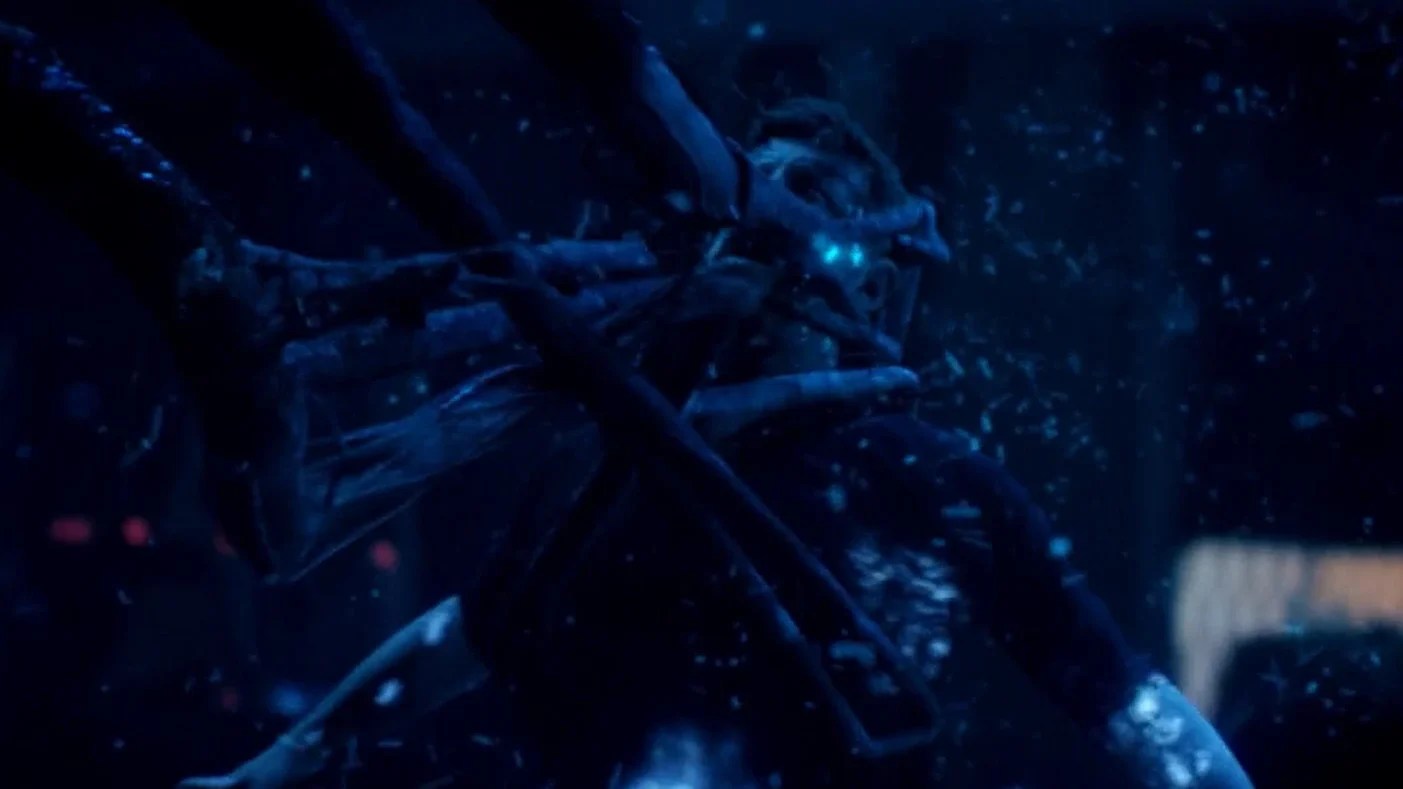
The final entry on the list has a death count in the hundreds of thousands, and it’s actually worse in the books The Expanse is based on. Rebel-aligned Julie Mao unwittingly becomes the carrier for what seems like a brutal infection when she carries the protomolecule from one of her missions onto Eros Station, which is set on an asteroid. The protomolecule is one of her father’s many experiments, and his company ultimately uses her and the rest of the station as a biological testing ground. While Julie gets the last laugh in the end (kind of), the experimentation of the people of Eros Station shocks the wider solar system, and sets off a wild chain of events.
The TV series actually tones down just how awful the protomolecule infection is; in the books, it’s some of the best sci-fi horror writing ever. Still, the show does emphasize just how terrible the “Eros Incident” is; the oppressed Belters ironically remix the last transmissions of the dying Eros denizens into dance music.


